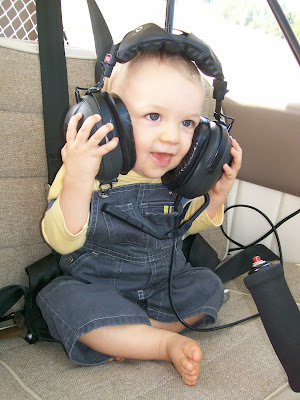
When I first started learning about performance in terms of flying, it was always in terms of looking at the numbers published in the Pilot Operating Handbook (POH) for a particular aircraft. Since much of mission flying is done from "non-standard" airstrips that are not 3000 feet long, we have developed specific takeoff and landing calculations for the aircraft we fly. Since the takeoff and landing distance along with climb out performance will change with weight, airstrip slope, temperature, altitude, and wind conditions, all this needs to be take into account to maintain safety.

Aside from takeoff and landing distance calculations, climb and approach angles also need to be factored in. It would not do any good to get off the runway but not be able to climb over the trees at the end of the clearing. Thankfully all these numbers and factors have been tested so that pilots can calculate all the needed data before taking off or landing. Lets look at a sample problem.
Starting with our hard facts I know that the C-206 in a no wind condition will fly a 5 degree approach angle. Thus from my touch down position there can not be any trees or obstructions that stick up more than 5 degrees from my touchdown point.
Second, I know that below 3000' density altitude my 206 will climb out at a 4 degree angle. However we factor in a 2 degree margin for safety. Thus from the point of rotation on takeoff I need to have a clear climb out path above 2 degrees. All of these angles can be measures with a tool called an inclinometer which is actually a foresty tool that works well for our needs. See the picture below.

Now that we have hard numbers on our approach and climbs angles, lets look at calculating takeoff and landing distance. Starting with a given weight, lets say 3400 lbs. the takeoff distance is 650 feet. I now have to correct that distance for runways conditions, density altitude, and wind. Then lets say the runway has short grass on it that is wet, I take the 650 feet and multiply by a modifier. For short grass that is wet, this happens to be an increase of 15% in takeoff roll. I multiply 650 by 1.15. The new number is 748 feet. Density altitude is 2000 feet so I adjust for an additional 10% or 1.10 and get 822 feet. The runways is sloped down 1 degree so that will reduce my takeoff roll. The adjustment for 1 degree down slope is 7 percent (0.93) for a total of 765 feet. A 5 knot headwind further decreases ground roll by 5 percent (0.95) giving a total takeoff distance of 727 feet. While I am on the ground at the runway, I can walk down 727 feet and whip out the inclinometer, measure the angle to the obstacle, and if it is less than 2 degrees, I can safely takeoff with my margin.

I hope this gives a little insight into how performance data is calculated, how safety margins are factored in, and how the modern day missionary pilots are going on far more than a wing and a prayer.





